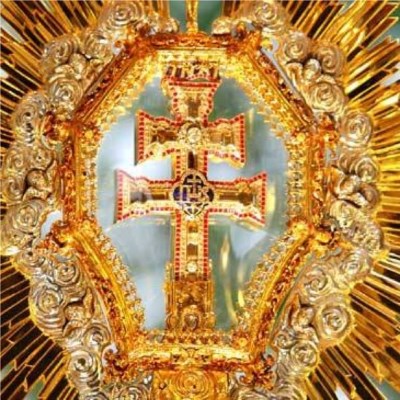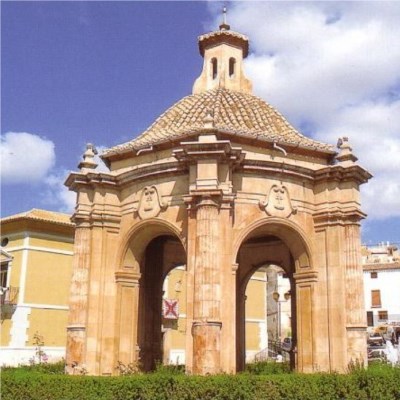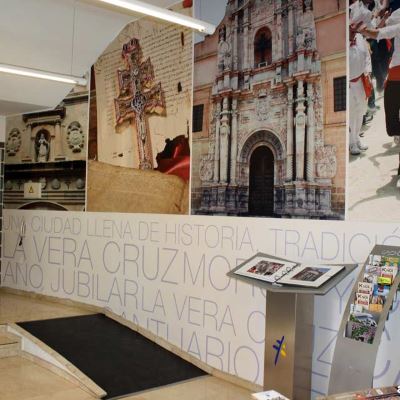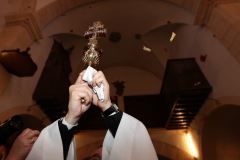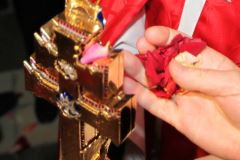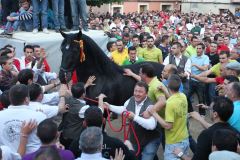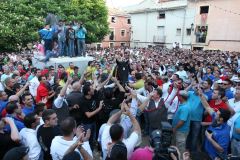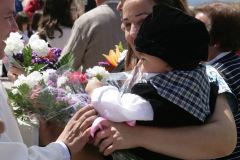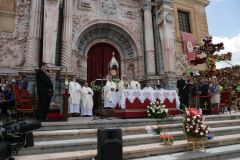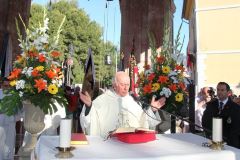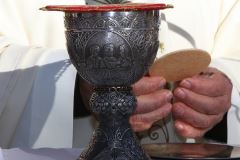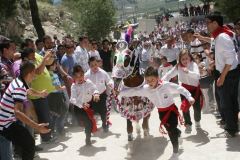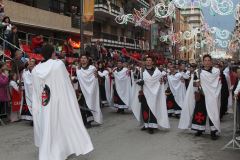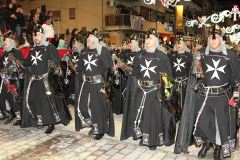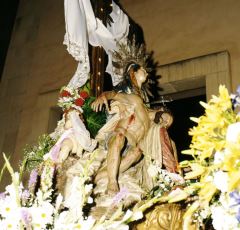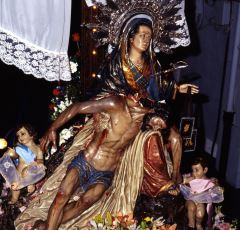-
Fiestas de Mayo (May Festivities)
-
Declared of International Tourist Interest
In spring, Caravaca is decorated to welcome its big days. Declared of International Tourist Interest, Fiestas de Mayo is worldwide known because of its one-of-a-kind “extraordinary and passionate” character. These days, full of emotions, the people from Caravaca and visitants share passions and joy, glorifying the Santisima y Vera Cross. They officially take place from May 1st to the 5th (although there are one day festivities that take place on March). The Holy Cross is joined during those days with the festivity of the Wine Horses (Caballos del Vino), Moors and Christians (moros y cristianos) that celebrates the city traditions.
Declared Intangible Cultural Heritage of Humanity by UNESCO.
Of all the festivities that make up the Holy Cross of Caravaca festivities, undoubtedly the most original is that of the Wine Horses, which takes place on the afternoon of the 1st and the morning of May 2, and in which three contests are integrated: Bareback Horse, the way the horses are dressed or harnessing, and the famous Race.
At the end of 2020, specifically, on December 16 of that year, Caravaca de la Cruz received the immense honor of receiving this recognition from UNESCO for such a unique popular celebration that amalgamates art and tradition and whose origin is related to one of the oldest rituals, the blessing of wine and flowers by the Vera Cruz.
-
Glorification of the Cross
-
At the end of summer, from September 10th to 14th, the acts of the Glorification of the Cross take place. They have religious connotations and Quinario de la Exaltación is the main one. Hundreds of believers go to the Sanctuary to venerate the Sacred Relic, being those days as important as the ones on May in the context of Christian faith.
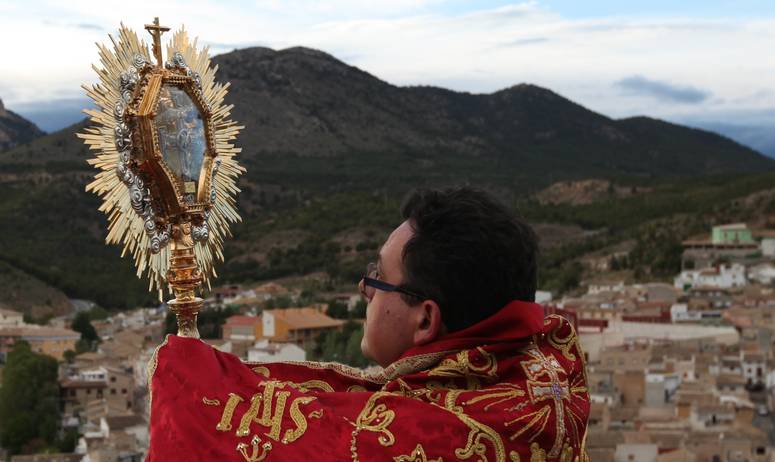
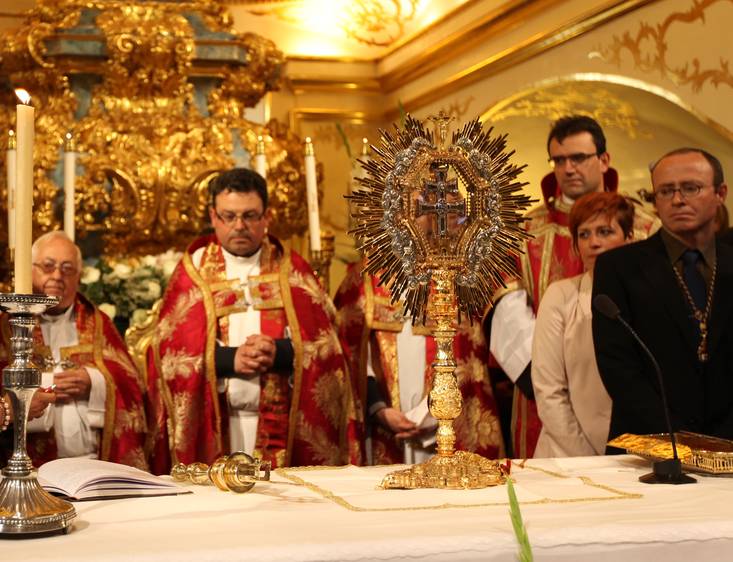
-
Fiesta of the Folk Dancers
-
Declared of National Tourist Interest
It is held in the borough of Barranda on the last Sunday of January. It is a very interesting Cuadrillas festival where tradicional folklore is performed: animeras, pardicas, jotas, etc. (folk dance and music). This fiesta started in 1979 following to the Fiesta de la Candelaria, the Saint Patroness of Baranda. This fiesta has a very personal identity and a great projection, being the first and most ancient festival of traditional music of Spain. As it was the major fiesta of this kind in this district, region and Spain, it meant a regeneration of many folk dance groups that had virtually disappeared.
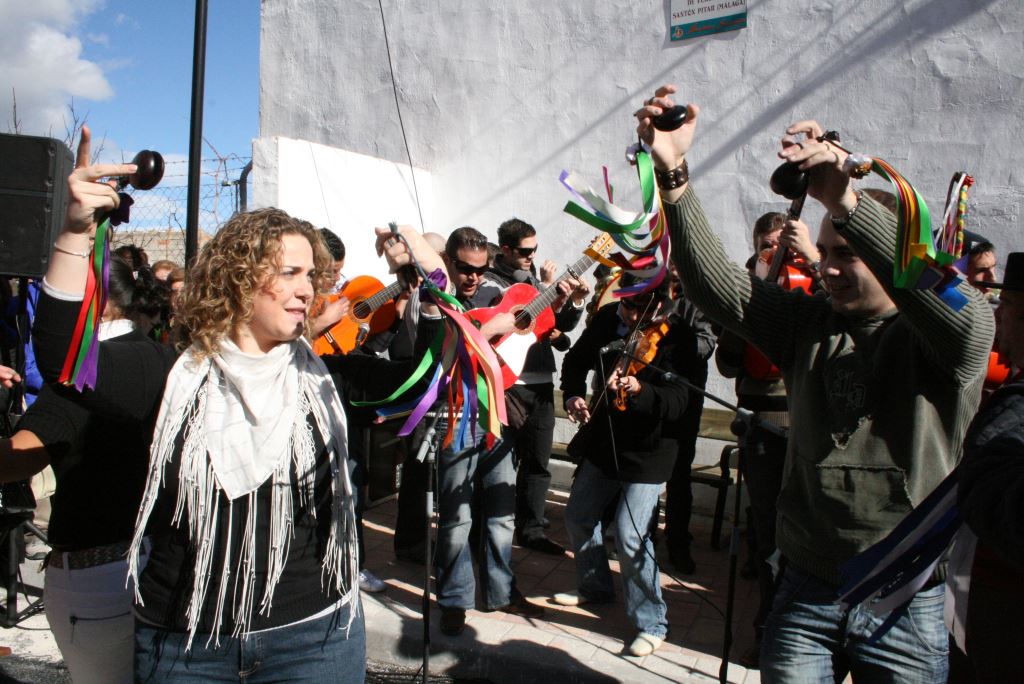

-
Easter
-
Caravaca de la Cruz celebrates the Eater week through several acts and processions of Nazarenos accompanying wooden images that enact the Passion of Christ, Death and Resurrection of Christ. During these days, a collection of images of the city churches is brought out to the streets in processions organized by the different Brotherhoods of Caravaca.



